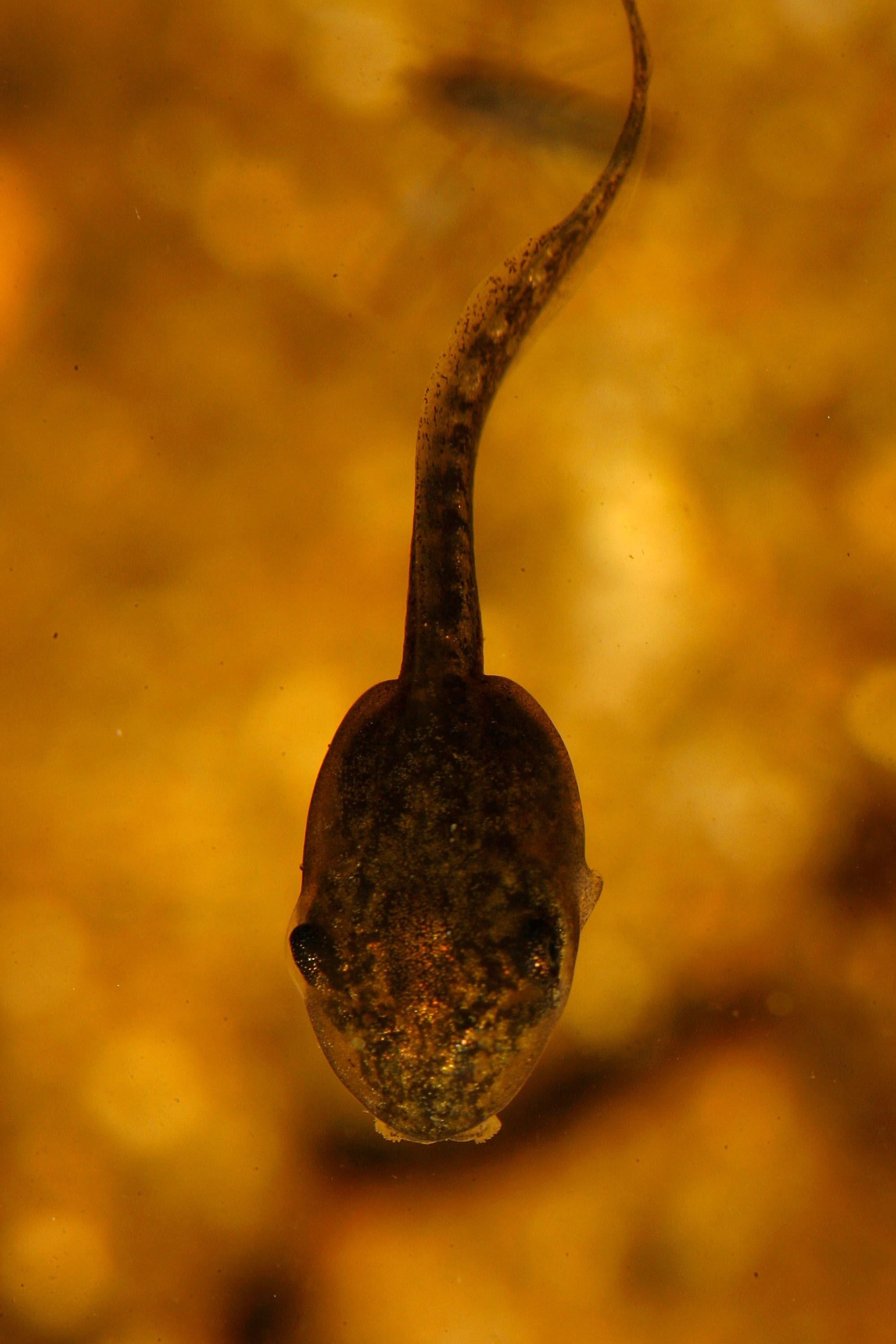Recently, we have witnessed remarkable, fictional-sounding advancements in science and medicine. There’s a guy who can hear color, another with a bionic eye attached to his brain, and a woman fighting back against the debilitating symptoms of multiple sclerosis by placing electrodes on her tongue. But for our next trick, we’re going to need a bucket of tadpoles with eyes on their butts and some good old-fashioned alternating current. In other words, things are about to get all kinds of weird.
There’s a great deal of wow to unpack here, so let’s take it piece by piece. Using embryos from the African clawed frog (Xenopus), scientists at Tufts’ Center for Regenerative and Developmental Biology were able to transplant eye primordia—basically, the little nubs of flesh that will eventually grow into an eye—from one tadpole’s head to another’s posterior, flank, or tail. They don’t play around with nerve endings or “wiring” or anything like that. They just cut out the cells from the head, slice open a bit of the tail, and jam them in.
As the eyes grow, they send out snaking tendrils of nerve fiber, or axons. We know this because the “tissue donor” tadpoles—a term that makes it sound like they had a choice—were injected with tdTomato, a fluorescent red protein. This allowed the researchers to watch innervation, or nerve growth, as it happened. Of those eye primordia that sent out feelers, nearly half hardwired directly into the spine, while the other half built connections to the nearby stomach. None of the tadpoles grew tdTomato-marked pathways to the brain.
Before they could test the ectopic eyes however, the native ones had to be severed and removed. Otherwise, how would the scientists know which of the tadpole’s three eyes was truly seeing? (Note: Severing optical nerves sounds like nasty business, but even these partially-developed tadpoles received anesthesia via fish sedative. Wounds healed completely within 24 hours.)
Finally, it was time to put the cyclops to the test. Using an underwater arena rigged with blue and red LEDs and electric shock, scientists ran through an exhaustive array of controls and variables. Interestingly, the tadpoles with no eyes at all could still react to LED changes, revealing that they may have other ways of sensing light. However, they proved woefully inadequate at avoiding shock, showing whatever information they were getting was ultimately flawed or unusable. On the other end of the spectrum were the control tadpoles that quickly learned to avoid the shocks through the scientists’ regimen of aversive conditioning.
As for the main event? Amazingly, a statistically significant portion of the transplanted one-eyes could not only detect LED changes, but they showed learning behavior when confronted with electric shock. Though eyes have been placed on or near rat brains in previous studies with success, this marked the first time a vertebrate eye has been able to send visual information to the brain without a direct connection—and from as far away as the other end of the organism.
Obviously, enormous questions remain. For instance, how does the brain know information coming up the spine from the tail is visual? It should have no idea what that knobby bit of posterior flesh is blinking about—and yet it seems to take the information in stride. The paper suggests perhaps different types of data are somehow marked, not altogether different from the way we demarcate files and commands in a computer.
Ahead lies everything from better computer brain interfaces to bioengineered organ systems. If we can understand the limits of the brain’s plasticity (the ability to change and adapt from experience), we might be able to one day create cybernetic devices that don’t just do what we program, but discover on their own what is required.
On the other hand, we do seem to be getting dangerously close to creating the eyeball-y beast from Pan’s Labrynth.
